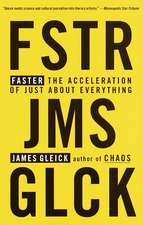The Light of the Night Sky: Episteme, cartea 8
Autor F. E. Roachen Limba Engleză Paperback – dec 1973
Din seria Episteme
- 20%
 Preț: 306.88 lei
Preț: 306.88 lei - 18%
 Preț: 951.91 lei
Preț: 951.91 lei - 15%
 Preț: 647.08 lei
Preț: 647.08 lei - 15%
 Preț: 640.71 lei
Preț: 640.71 lei -
 Preț: 395.63 lei
Preț: 395.63 lei - 20%
 Preț: 993.42 lei
Preț: 993.42 lei - 18%
 Preț: 944.67 lei
Preț: 944.67 lei -
 Preț: 398.92 lei
Preț: 398.92 lei - 15%
 Preț: 644.30 lei
Preț: 644.30 lei - 15%
 Preț: 644.63 lei
Preț: 644.63 lei - 18%
 Preț: 953.20 lei
Preț: 953.20 lei - 20%
 Preț: 553.11 lei
Preț: 553.11 lei - 18%
 Preț: 894.46 lei
Preț: 894.46 lei - 15%
 Preț: 651.67 lei
Preț: 651.67 lei - 18%
 Preț: 954.62 lei
Preț: 954.62 lei - 15%
 Preț: 643.99 lei
Preț: 643.99 lei - 20%
 Preț: 328.79 lei
Preț: 328.79 lei -
 Preț: 380.25 lei
Preț: 380.25 lei -
 Preț: 388.90 lei
Preț: 388.90 lei - 15%
 Preț: 654.12 lei
Preț: 654.12 lei - 18%
 Preț: 1231.64 lei
Preț: 1231.64 lei -
 Preț: 387.38 lei
Preț: 387.38 lei -
 Preț: 388.90 lei
Preț: 388.90 lei - 18%
 Preț: 948.79 lei
Preț: 948.79 lei
Preț: 380.45 lei
Nou
Puncte Express: 571
Preț estimativ în valută:
72.80€ • 76.36$ • 60.60£
72.80€ • 76.36$ • 60.60£
Carte tipărită la comandă
Livrare economică 01-15 aprilie
Preluare comenzi: 021 569.72.76
Specificații
ISBN-13: 9789027702944
ISBN-10: 9027702942
Pagini: 140
Ilustrații: XI, 126 p. 49 illus.
Dimensiuni: 170 x 244 x 7 mm
Greutate: 0.24 kg
Ediția:Softcover reprint of the original 1st ed. 1973
Editura: SPRINGER NETHERLANDS
Colecția Springer
Seria Episteme
Locul publicării:Dordrecht, Netherlands
ISBN-10: 9027702942
Pagini: 140
Ilustrații: XI, 126 p. 49 illus.
Dimensiuni: 170 x 244 x 7 mm
Greutate: 0.24 kg
Ediția:Softcover reprint of the original 1st ed. 1973
Editura: SPRINGER NETHERLANDS
Colecția Springer
Seria Episteme
Locul publicării:Dordrecht, Netherlands
Public țintă
ResearchCuprins
From Day to Twilight to Night.- 1.1. The Day Sky - The Blue Planet.- 1.2. The Twilight Sky.- 1.3. The Human Eye and Its Adaptation to Low Light Levels.- 1.4. The Night Sky.- References.- Star Counts and Starlight.- 2.1. Plan of Selected Areas.- 2.2. Modified Star Counting.- 2.3. Distribution of Integrated Starlight over the Sky.- 2.4. Distribution of Starlight over the Sky.- 2.5. Photometric Map of the Sky Based on Star Counts.- 2.6. The Total Light from the Stars.- 2.7. Our Felicitous Location in the Galaxy.- Appendix 2-A. Star Gaging (Herschel) and Star Counts.- Appendix 2-B. Photometric Units in Surface Photometry.- References.- The Zodiacal Light and Gegenschein.- 3.1. Polarization of the Zodiacal Light.- 3.2. The Gegenschein.- References.- The Night Airglow or Nightglow.- 4.1. The Nightglow - Static or Dynamic?.- 4.2. Sources of Nightglow.- 4.3. Photochemical Reactions in the Upper Atmosphere.- 4.4. The Nightglow from Space: the Exosphere and Geocorona.- 4.5. Midlatitude Stable Auroral Arcs (M/SAR).- 4.6. The Polar Aurora.- 4.7. Effect of Nightglows on LONS Studies.- Appendix 4-A. The Change in Brightness of a Nightglow Layer with Zenith Distance.- References.- Dust-scattered Starlight - The Diffuse Galactic Light.- References.- Dust - Interplanetary and Interstellar.- 6.1. The Zodiacal Dust Cloud.- 6.2. Interstellar Dust.- References.- Cosmic Light and Cosmology.- References.- Epilogue.- References.












